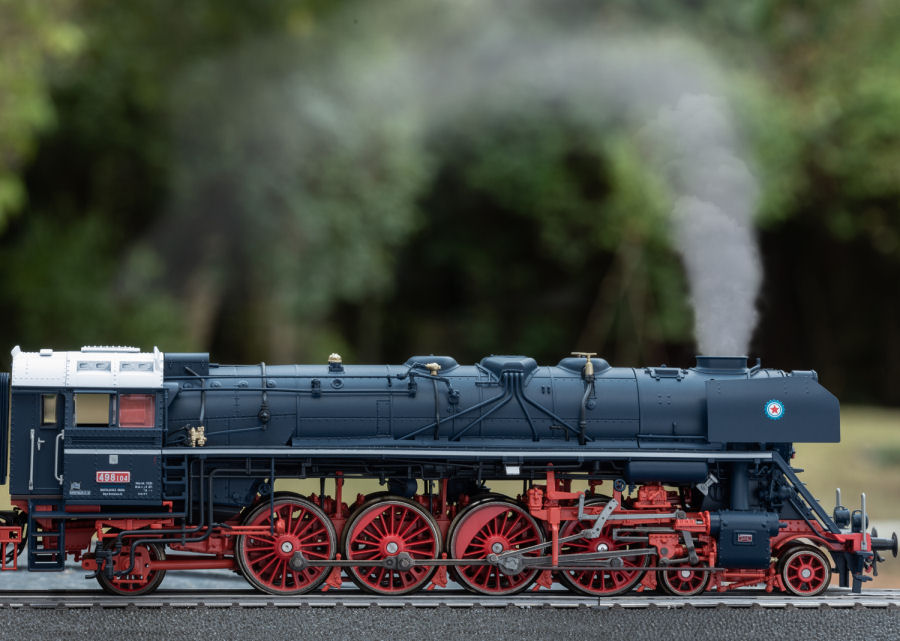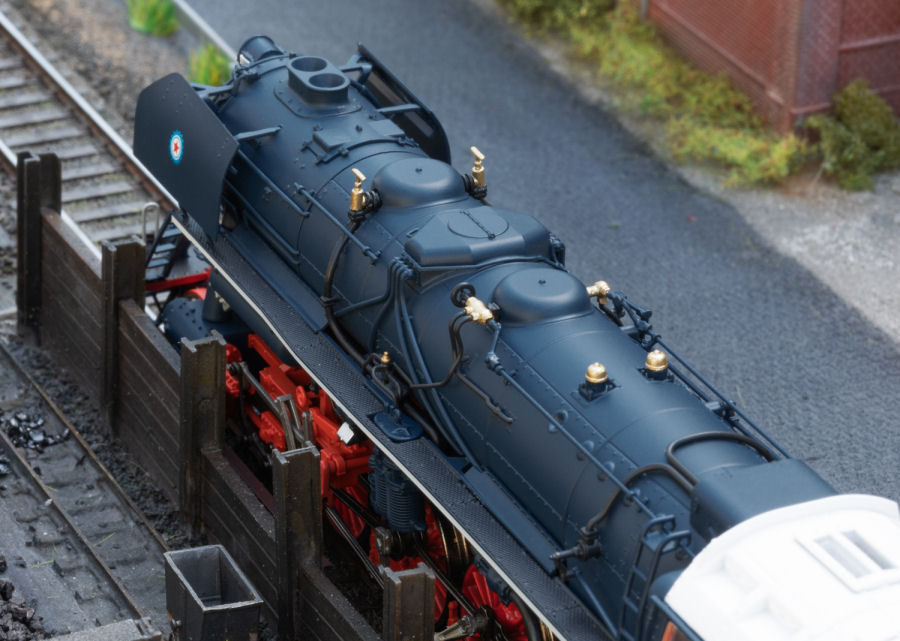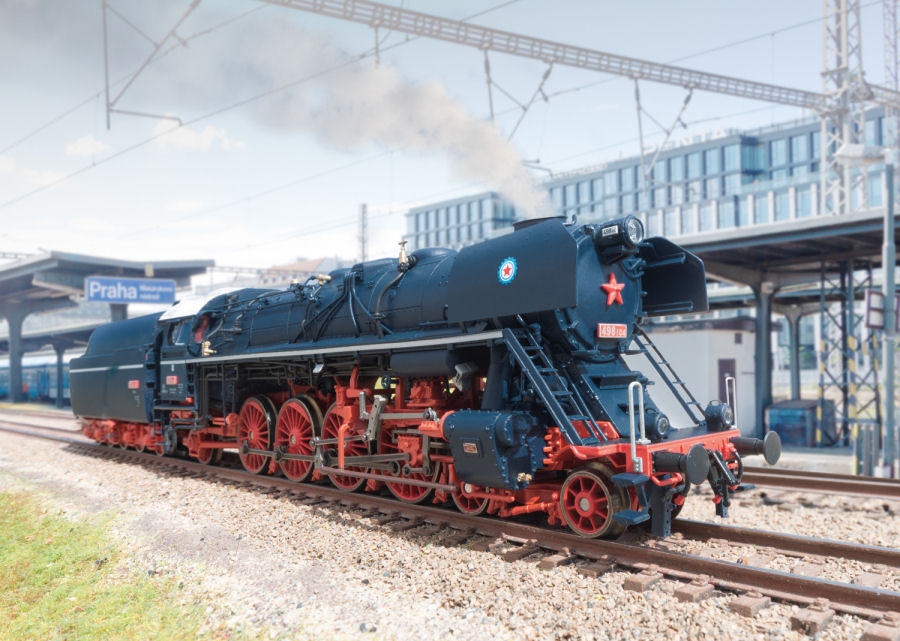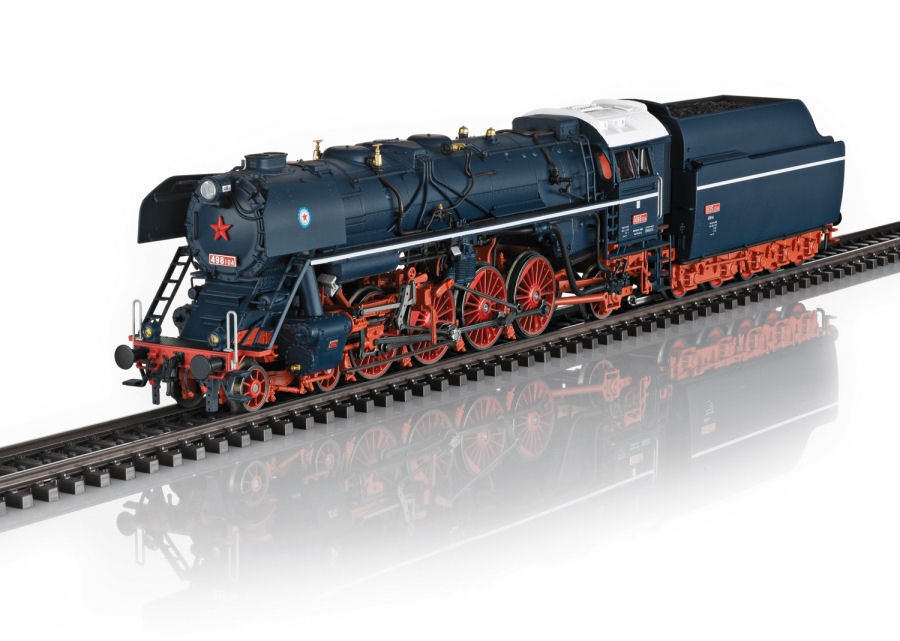- Completely new tooling.
- Especially intricate metal construction.
- Many separately applied details.
- Factory-installed smoke unit with speed-dependent, dynamic smoke exhaust.
- Cab lighting can be controlled digitally.
- World of Operation mfx+ digital decoder and extensive sound and light functions included.
- Buffer height on the locomotive and the tender adheres to NEM standards.
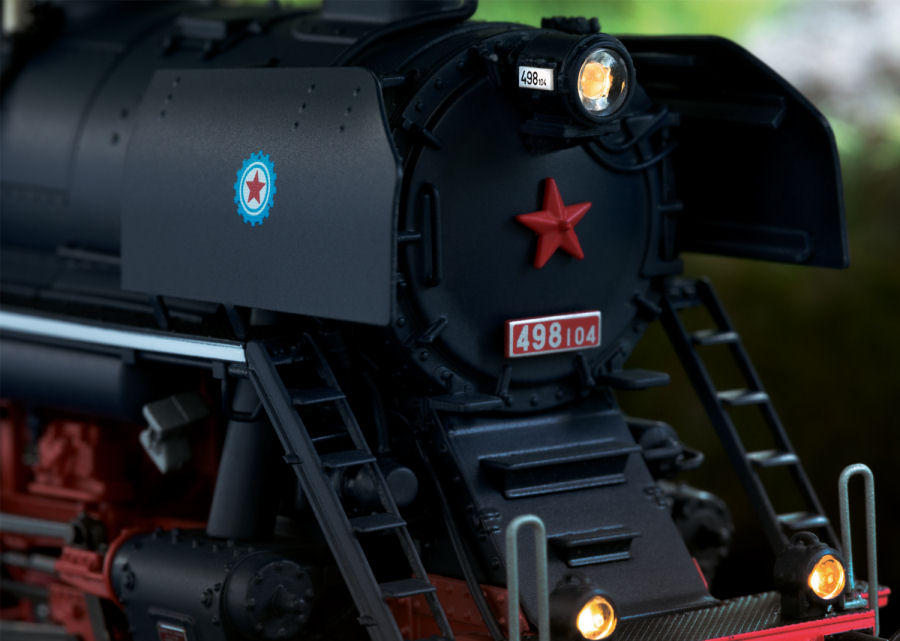
Model: The locomotive has an mfx+ decoder and extensive light and sound functions. It also has controlled high-efficiency propulsion with a flywheel, mounted in the boiler. 4 axles powered. Traction tires. The locomotive and tender are constructed mostly of metal. The locomotive also has a factory-installed smoke unit with speed-dependent, dynamic smoke exhaust. The locomotive has triple headlights and the tender has dual headlights. These lights change over with the direction of travel and can be controlled digitally. The upper headlight on the locomotive can be controlled separately. There is a working lighted locomotive number board built into the upper headlight. The cab lighting can be controlled digitally. Maintenance-free warm white LEDs are used for lighting. There is an adjustable close coupling with a guide mechanism between the locomotive and tender. There is a close coupler with a guide mechanism and an NEM pocket on the back of the tender. The buffer height on the locomotive and the tender adheres to NEM standards. Brake hoses, imitation prototype couplers, and an air tank for installation on the tender are included. Piston rod protection sleeves are also included. The minimum radius for operation is R2=437.5 mm / 17-1/4". Length over the buffers approximately 29.3 cm / 11-1/2".
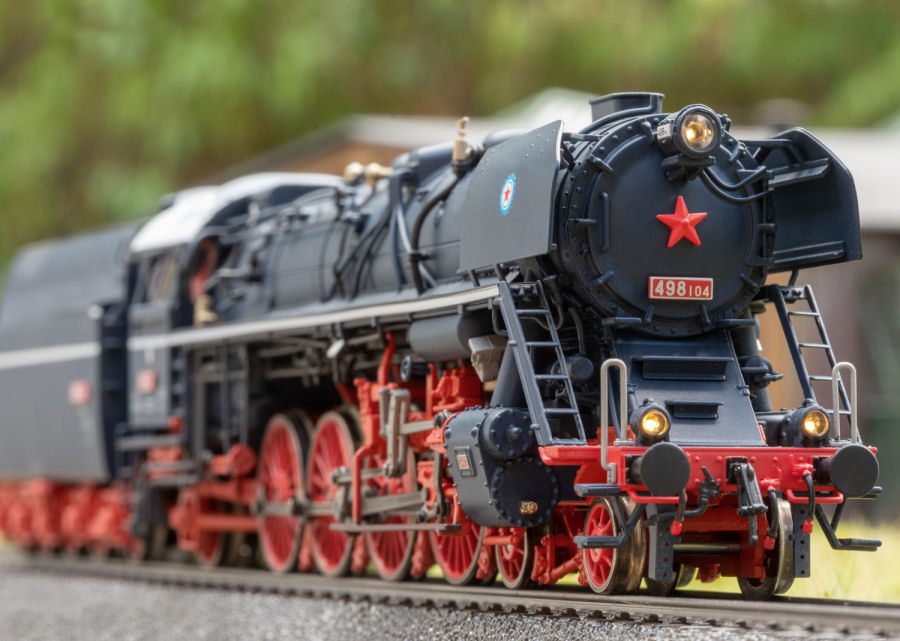
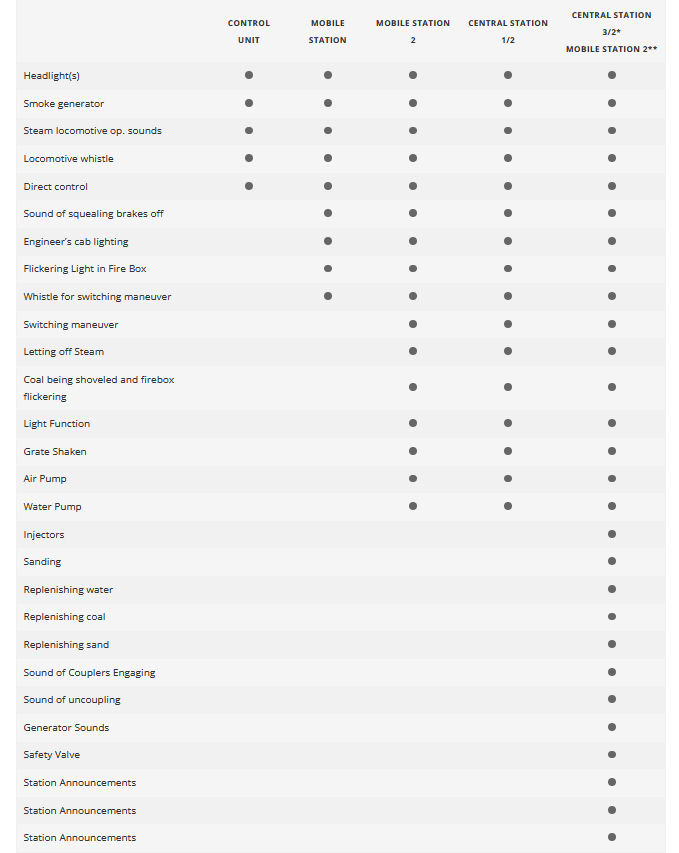
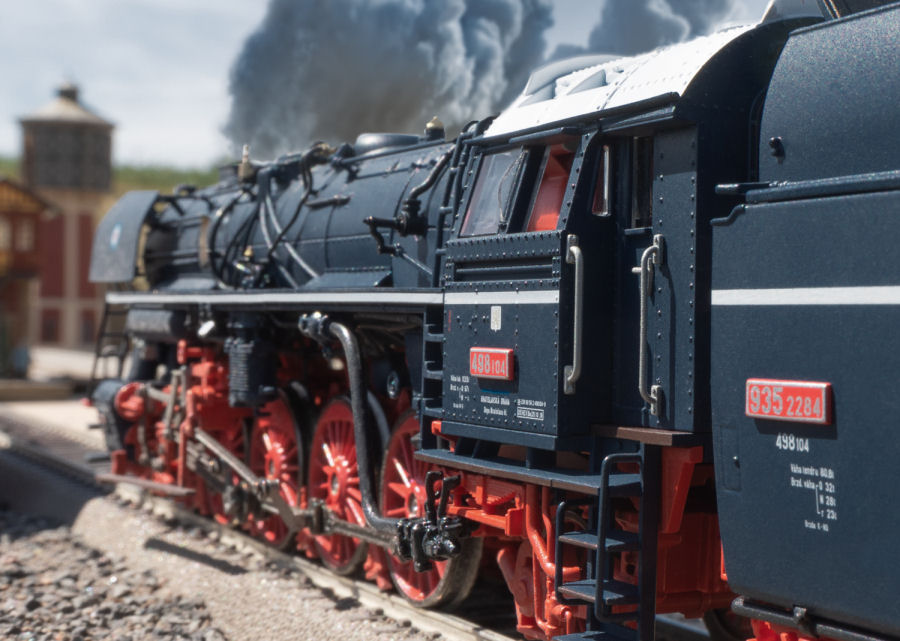
Prototype information: 39498 – ČSD Steam Locomotive Class 498.1 "Albatros jednička" (= Chief/Boss Albatros) The latest design principles defined the construction and at the same time the high point of the last Czechoslovakian express steam locomotives. ŠKODA delivered 15 units of the class 498.1 between December of 1954 and June of 1955 as a further development of the class 498.0. These three-cylinder locomotives had the same running gear and an axle load of 18.6 metric tons. They sparkled with their welded, high-performance boilers with a combustion chamber and a steel firebox with a high level of performance and attractive cost effectiveness. They were able to haul 600 metric ton trains on level terrain at 116 km/h / 72 mph and on a grade of 1.4% at 30 km/h / 19 mph. The modern standards for these units included mechanical stokers, the Kylchap dual blast pipe, a Škoda design multiple safety valve, a water purifier installed in the front dome, as well as SKF side rod and drive rod bearings. Witte smoke deflectors completed the sleek good looks. The completely enclosed cab contributed considerably to the comfort of the locomotive crew in the winter. The defined maximum speed of 120 km/h / 75 mph was sufficient for the hilly routes of the ČSD, but clearly higher speeds could be reached. Road number 498 106 demonstrated this quite clearly on August 27, 1964 in test runs on the experimental ring at Velim with a maximum speed of 162 km/h / 101 mph. While these locomotives were initially stationed at Prag, Přerov, and Žiliny, starting in 1960, they were all assigned to Bratislava. This did not change until 1970, when electrification provided new areas of use. The class 498.1 locomotives now ran in operation out of Nové Zámky and Plzeň (Pilsen). Road number 498 106 was even equipped in 1978 with an HU unit in order to replace the trouble-plagued class 753 diesel locomotives between Brünn (Brno) and Přerov. It survived together with road numbers 498 101 and 108 in Pilsen until 1980 and then it was all over. One single "Albatros" remained in Slovakia: the operational museum locomotive, road number 498.104. At the end of 2004, this unit traditionally based in Bratislava had to be put into storage with boiler damage. There were several years of restoration with considerable support from the Albatros Club in Bratislava. Since the beginning of 2006, this locomotive has been on loan to the Albatros Club. The club is responsible for its maintenance and also for its operation and the locomotive crew. The restoration was completed in November of 2009. Since then, this mighty express train locomotive has gleamed again in the original paint scheme with the boiler, cylinders, cab, tender, and smoke deflectors in steel blue, the running gear in addition to the buffer beam in red as well as a continuous white stripe from the running boards across the cab to the tender. The roof of the cab is also carried out in white.
